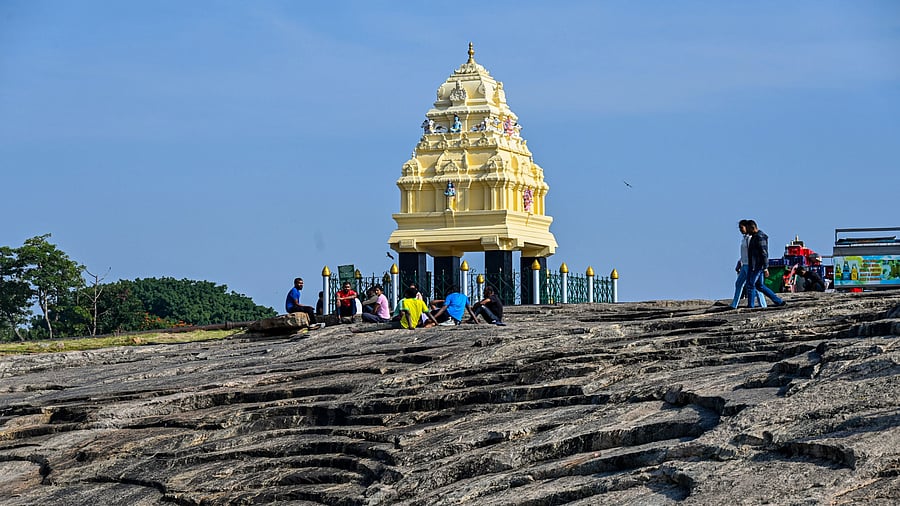
A view of the area at Lalbagh Botanical Garden, where the tunnel road project poses a potential threat to the 300-million-year-old rock formation and fragile ecosystem, including flora and fauna that could be impacted by the project, October 12, 2025.
Credit: DH photo
The proposed 16.7-km tunnel road between Central Silk Board and Hebbal in Bengaluru is on shaky ground. Costing nearly Rs 18,000 crore, this underground twin-tube project, actively backed by Deputy Chief Minister D K Shivakumar, is being pushed through with unseemly haste, even as crucial questions about feasibility, safety, and environmental impact remain unanswered.
An expert committee constituted by the government has flagged over 121 shortcomings in the Detailed Project Report (DPR) prepared by B-SMILE. The committee, headed by BMRCL executive director S Hegaraddi, found the report to be riddled with inconsistencies, copy-paste errors, and “bare minimum” geological data. It warned that this could lead to cost escalations, waterlogging, and structural issues during construction. The committee has also recommended that at least 90% of the worksite area be encumbrance-free before tendering, a norm yet to be complied with.
Perhaps the most troubling revelation concerns the alignment passing perilously close to one of Bengaluru’s oldest and most cherished green spaces, Lalbagh Botanical Garden, developed over two centuries ago by Hyder Ali and Tipu Sultan. Environmentalists have also flagged the risks to Lalbagh’s rock bed, groundwater, and rare trees. While Shivakumar has clarified that six acres of Lalbagh will not be acquired as feared, ignoring the red flags raised by the panel and proceeding with bidding would be reckless. This begs the question: why is the DCM, and the government, in such a tearing hurry?
Adding to the unease is the plan’s regressive mobility vision. The tunnel will cater only to private cars – no buses or two-wheelers – and levy steep tolls of around Rs 19 per kilometre, making a one-way full journey cost over Rs 300. This makes it a project for the privileged, not the public. Bengaluru’s real mobility crisis lies in the inadequacy of its public transport. The Metro line to the airport has been hanging fire for years; suburban rail, bus corridors, and last-mile connectivity continue to languish.
The DCM should focus on completing these projects rather than chasing grandiose new ones. It would be wiser for the government to strengthen public transport, integrate modes, and make commuting efficient for all rather than for an elite minority. If these concerns are borne out, the tunnel could turn into another costly white elephant, draining public funds and delivering little in return. Does Bengaluru really need another expensive experiment, or a sustainable mobility vision that serves the city’s future? This is the time to pause, listen to the experts, and fix what is already broken before digging new holes – literally and financially.
